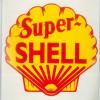What do you rev to?
Announcements
-
Similar Content
-
Latest Posts
-
In Vic it would be a defect regardless of whether or not you cut a hole in the sheetmetal for the return pipe. The rules in Vic are shitful, and are generally interpreted as you can "make 2 mods to the intake system". Putting an FFP and an FMI onto it will almost certainly be seen as some huge number of intake mods. You really need to speak to an engineer before doing this stuff in VIC.
-
By BuiltNotBought · Posted
planning a r34 rb25 de+t with some other work, rather just have it done in a shop due to space limitations any recommendations? I have most the parts already I seen online Moore Performance and DR Drift any advice appreciated thanks -
By BuiltNotBought · Posted
I’ve read the previous posts so just looking for latest information on how people have dealt with front facing plenum is it a defect etc or didn’t pass roadworthy or was it not noticed? Have a r34 and deciding if I should make a hole on the driver side or not. I know some people have said blitz return flow but I might get rid of the stock intake down the line for a plenum so I rather set up for that now plus I already have a standard Intercooler. Car is mainly stock Thanks. -
Actually, if having and keeping the stock ECU is the plan, the correct answer is to put Nistune into the ECU and improve the situation, not just look at it.
-
Wrong side of sydney for me coming from Goulburn, but you should head along, all ages of Skylines will be very welcome
-






Recommended Posts
Create an account or sign in to comment
You need to be a member in order to leave a comment
Create an account
Sign up for a new account in our community. It's easy!
Register a new accountSign in
Already have an account? Sign in here.
Sign In Now